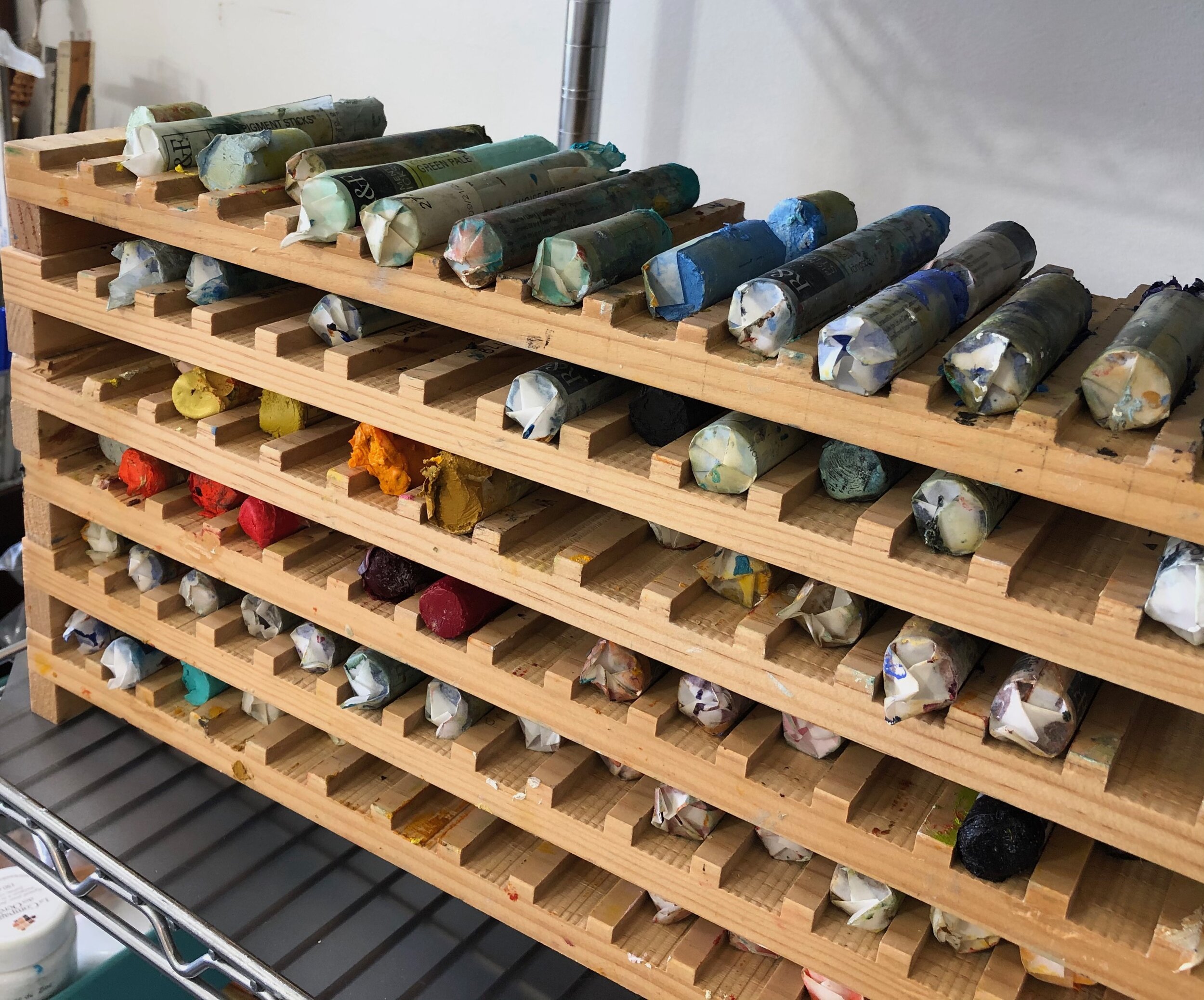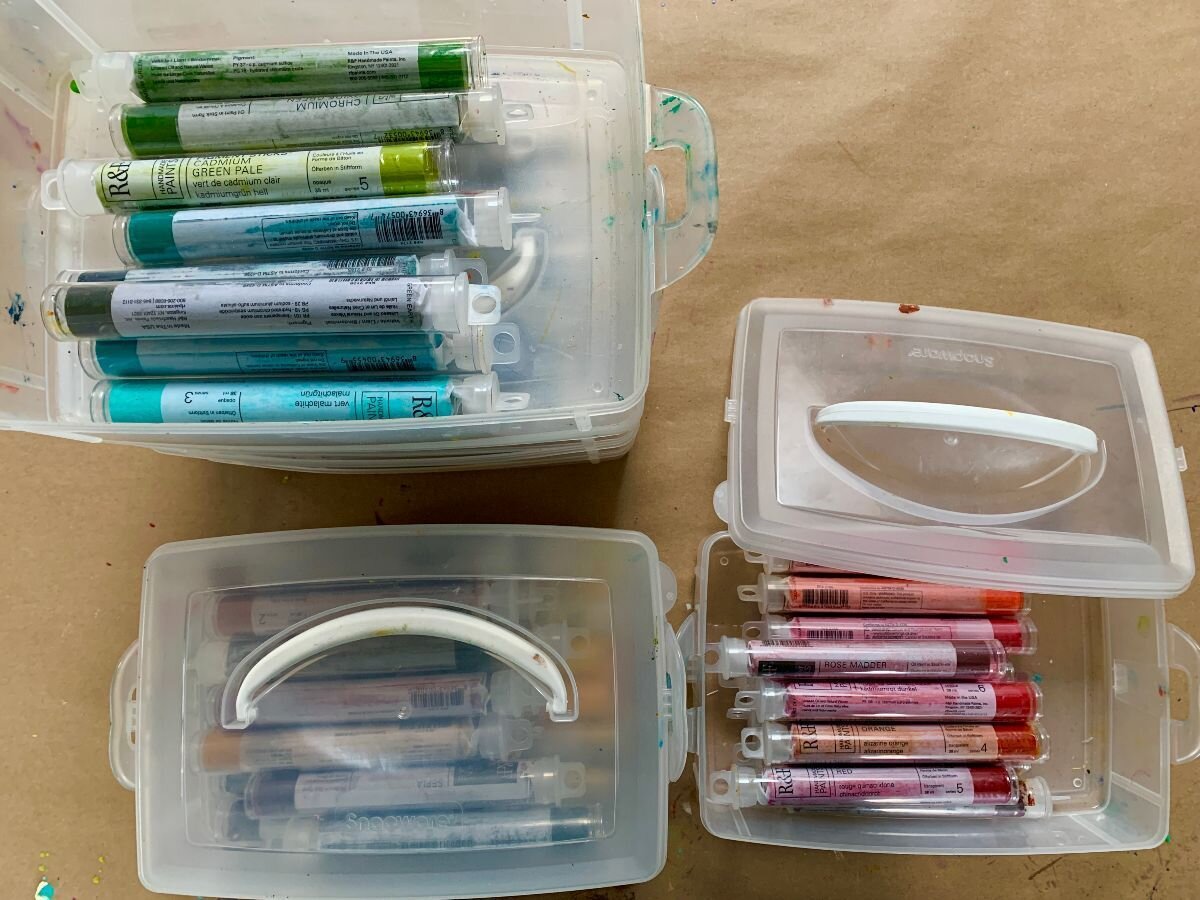R&F Pigment Sticks®: How To Store Your Paint
Image credit: R&F Core Instructor Julie Snidle.
We are often asked for the best way to store R&F paints. As with many of the technical questions we receive, there tends to be more than one correct answer depending on your needs. We checked in with the R&F Core Instructors to learn about some of the products (store-bought and custom-made) and methods they are using in their studios.
An excellent place to start is to ask yourself what exactly you would like out of your paint. Would you like all colors visible with quick access? Do you want to extend the life of the paint as long as possible? Should you separate by color family or opacity? We hope the information below can help direct you towards a helpful plan for your storage needs.
This week we focus on R&F Pigment Sticks®, and next week we return with strategies to organize and store encaustic.
Image credit: R&F Core Instructor Julie Snidle.
Julie Snidle on extending the life of her Pigment Sticks® and categorizing color...
I store my Pigment Sticks® in Ziploc bags, which are then stored in plastic clip bins with lids (such as Sterlite). Separate bags are used for new and used sticks. I group them like this:
Warm Transparent
Warm Opaque
Cool Transparent
Cool Opaque
Neutrals and Metallics
During the painting process, I use wooden stackable trays my dad built for me. They work well for keeping the sticks separated, clean, and easy to label.
A note from R&F: Placing R&F Pigment Sticks® into these airtight containers slows the oxidation process and helps lengthen the life of the paint.
Categorizing your paint: There are great benefits to separating colors by their opacity and color family. This will also help you discover the dynamic range of the top tone and undertone of each color, and how they relate when used together.
Image credit: R&F Core Instructor Leslie Giuliani.
Leslie Giuliani on methods for quick access to paint.
Image credit: R&F Core Instructor Leslie Giuliani.
For new Pigment Sticks®, I use stacking caddies to keep one of each color handy, organized according to color. For the opened sticks, I have found plastic egg cartons very useful. I can lay longer sticks in the lids and keep smaller sections in the egg compartments. I can give each visiting artist their own color palette this way, as well.
A note from R&F: We recommend removing Pigment Sticks® from their retail plastic tubes once you have peeled back any of the label from a new stick. A larger airtight container will allow easier access vs. the retail tube. Pigment Sticks® tend to stick to the plastic tube when the outer layer dries.
Image credit: R&F Core Instructor Michelle Belto.
Michelle Belto on studio storage and items for traveling with Pigment Sticks®.
For the colors I use most often, I have a plastic parts sorter from Harbor Freight. I store new or less used Pigment Sticks® in plastic lidded boxes. I bought twist-up plastic holders for my students who use Pigment Sticks® when I needed to transport materials to out of state teaching venues. Students began asking for them, so I now have them on my Etsy site for sale.
A note from R&F: While air-tight storage is definitely the best way to slow the drying process, it should also be noted that the sticks can be left exposed to air if preferred. The outer layer of the paint will dry and skin over, protecting the inner material for an extended period of time. This may be ideal for very quick access to your paint, however, the dried paint skin will need to be removed with a rag and linseed oil.





